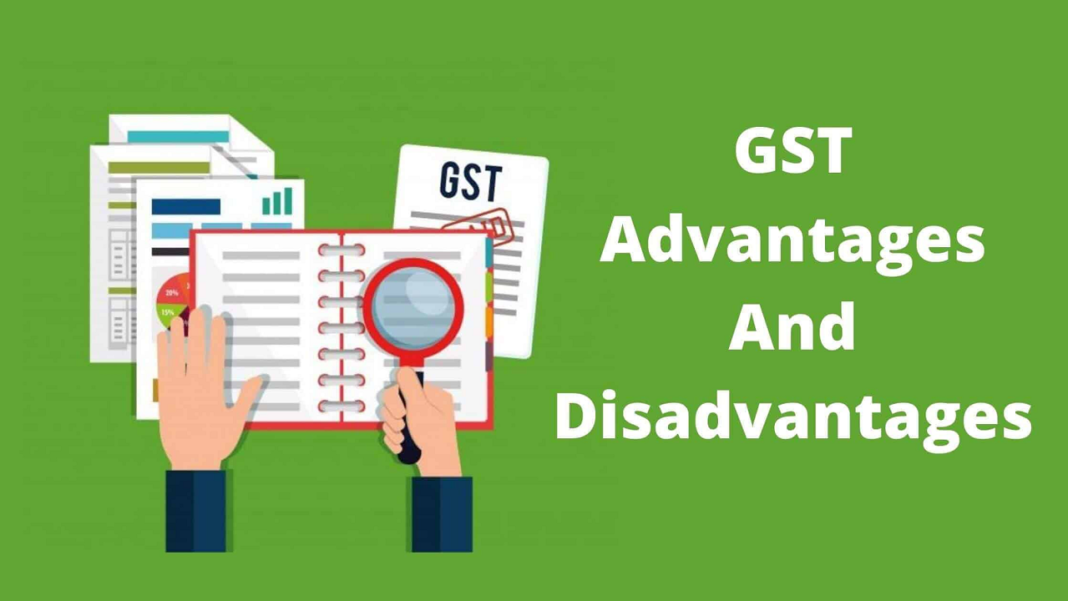The Goods and Services Tax (GST) is a value-added tax levied on most goods and services sold for domestic consumption. The GST is paid by consumers, but it is ultimately remitted to the government by businesses.

Businesses are able to claim GST credits for the GST they have paid on their inputs (e.g. raw materials, overheads) which they can use to offset the GST they charge on their outputs (e.g. products, services). In this blog post, we will explore the advantages and disadvantages of the GST from both the business and consumer perspective.
What is GST?
The Goods and Services Tax (GST) is a value-added tax levied on most goods and services sold for domestic consumption. The GST is paid by consumers, but it is refunded to them when they file their taxes. The GST was introduced in Canada on January 1, 1991, replacing the Manufacturers’ Sales Tax (MST).
The GST is a 5% tax on the sale of most goods and services in Canada. There are some exceptions, such as books, children’s clothing and some food items. The GST is also applied to imports into Canada.
The GST is collected by the Canada Revenue Agency (CRA) and remitted to the federal government. The federal government then transfers an equal amount of money to the provinces and territories.
How does GST work?
Under the GST regime, all businesses are required to charge GST on the sale of their goods and services at a rate of 18%. GST is then paid to the government by the business, minus any credit for GST included in the price of purchases from other businesses.
The end consumers of goods and services bear the brunt of this tax in the form of higher prices. But they also get some relief in the form of input tax credits, which can be claimed by registered businesses on their GST returns.
In order to understand how GST works, let’s take a look at an example:
Say you run a small business that sells furniture. You purchase your raw materials and finished products from suppliers who are registered for GST. This means that they charge you GST on their products (at a rate of 18%). When you sell your furniture, you must also charge your customers GST (at a rate of 18%).
So, for every $100 worth of furniture you sell, you must pay $18 in GST to the government. But, because you were charged $18 in GST on your purchases, you can claim this back on your next GST return. This leaves you with a net payment of $0 to the government.
If your business is not registered for GST, you cannot claim back any input tax credits. This means that the full cost of GST will be passed on to your customers in the form of higher prices.
What are the advantages of GST?
The Goods and Services Tax (GST) is a value-added tax levied on most goods and services sold for domestic consumption. The GST is paid by consumers, but it is remitted to the government by businesses. The GST replaces several other taxes, including the federal sales tax, provincial sales taxes, and the Harmonized Sales Tax (HST).
The main advantage of the GST is that it simplifies the tax system by consolidating multiple taxes into one. This makes it easier for businesses to comply with tax laws and results in lower costs for businesses and consumers. Additionally, the GST is a more efficient way to collect taxes because it reduces compliance costs and improves tax compliance.
Another advantage of the GST is that it helps to promote exports and economic growth. By taxing consumption rather than production, the GST provides an incentive for businesses to expand their operations and sell more goods and services abroad. Additionally, the GST increases government revenue without putting undue burden on taxpayers.
Lastly, the GST is a fair tax because it applies equally to all goods and services sold in Canada. This ensures that everyone pays their fair share of taxes, regardless of income level or ability to pay.
What are the disadvantages of GST?
There are a few disadvantages associated with the GST, which include:
1. The GST has increased the cost of living for many Australians, as the price of goods and services has increased since the tax was introduced.
2. The GST has made it more difficult for small businesses to compete, as they often don’t have the same level of access to tax concessions as larger businesses.
3. The GST has created a complex tax system that can be hard to understand and comply with. This can result in errors and penalties for businesses that don’t correctly navigate the system.
Who pays GST?
GST is a broad-based tax of 10% on most goods and services sold or consumed in Australia.
Businesses registered for GST must include GST in the price of their goods and services. When consumers buy these goods and services, they are paying the GST. The business then pays this money to the ATO.
Some businesses may claim back some or all of the GST they have paid on their business purchases (input tax credits). They do this when they lodge their business activity statement.
How is GST calculated?
To calculate GST, you take the total price of the good or service, including any taxes that are already included in the price (such as PST, HST, or QST), and multiply it by 5%. So, if something costs $100 and already includes $9 in tax, the total cost with GST would be $105.
What items are exempt from GST?
GST is a consumption tax levied on the sale of goods and services. The GST is levied on the value-added of each transaction, which is the difference between the selling price and the purchase price. GST is collected by the government and then redistributed to the states and territories.
Some items are exempt from GST, including:
- Food
- Clothing
- Pharmaceuticals
- Books
- Newspapers
- Childcare services
Also Read: Repo Rate And Reverse Repo Rate

